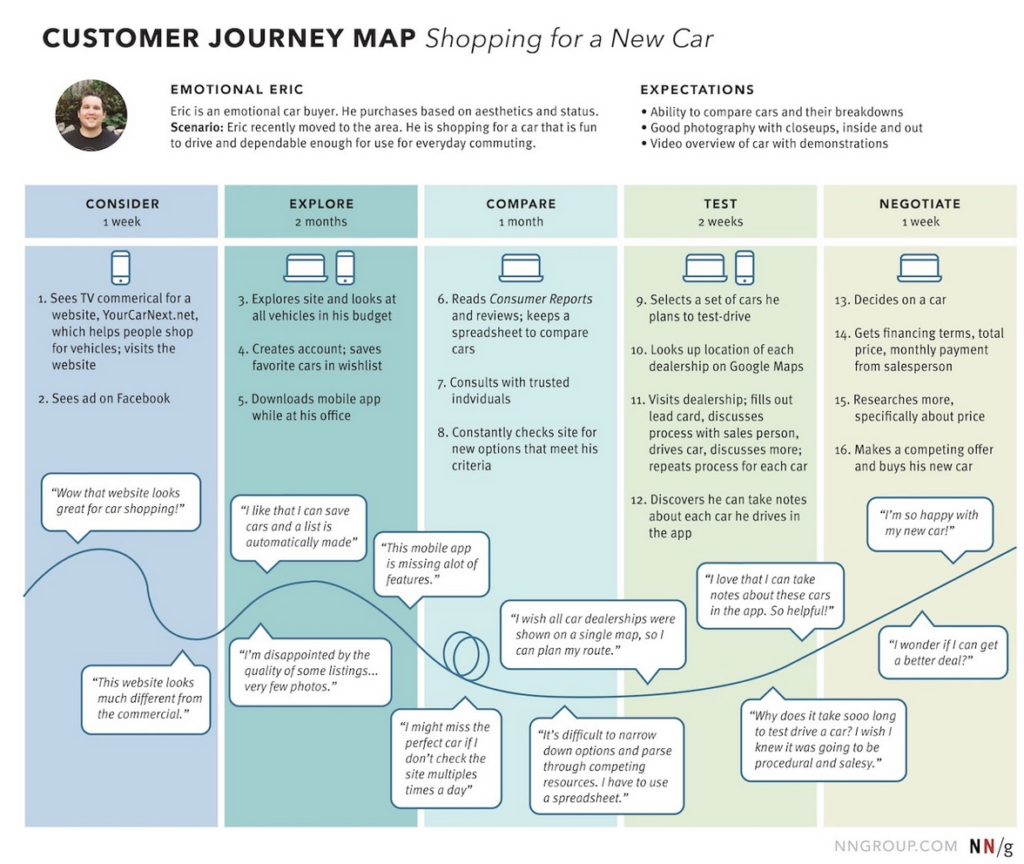One of the many challenges that organizations regularly face is keeping member renewals and retention high. And that challenge has only grown during the COVID-19 pandemic and related shifts in the membership landscape.
According to the 2021 Membership Marketing Benchmark Report, 45% of associations saw a decline in member renewal. This is an almost 2X spike from 2020’s rate of 24%.
So how can organizations stem the loss of members and keep their retention rates high? The first step is understanding your members. It starts with a comprehensive knowledge of a typical member journey. With this information, you can engage your members and address pain points that cause them to leave.
This is where a member journey map can help. Here, we’ll examine the crucial components of a member journey map, its many advantages, and how to build one of your own. You’ll learn:
- What is a Member Journey Map?
- The Benefits of Member Journey Mapping
- 4 Steps to Create a Member Journey Map
- Member Journey Map Example
With this crucial info, you’ll be able to outline how your members interact with your organization and enhance your member experience.
What is a Member Journey Map?
A member journey map charts the typical interactions between your members and your organization. This kind of map follows members from the first time they make first contact to their engagement throughout their membership. It can include touch points such as:
- Interactions on social media with your organization
- When they emailed to ask for more information
- Their attendance at a recruitment event
A member journey map should document a member’s entire experience, as demonstrated in this example:

The Benefits of Member Journey Mapping
In addition to giving you a better understanding of how your members interact with your organization, member journey maps offer a few other benefits. The most common of which include:
- Alignment with your colleagues. A member journey map helps get you and the rest of your organization’s staff on the same page. Especially if your organization has multiple, siloed departments. A member journey map helps everyone visualize every member interaction, providing insight into their wants, needs, and feelings. Ultimately, it helps you and your colleagues better serve them.
- Identifying opportunities in the member experience. There’s always room for improvement, even for organizations that offer top-notch member experiences. A member journey map highlights aspects of the member experience that fall short, which can highlight opportunities to improve their experience. It can also show you points of success. Based on this information, you can take steps to iterate and improve on your member experience, which includes repeating past wins.
4 Steps to Create a Member Journey Map
If you’re looking to start building your own member journey map, we’ve broken down the process to four key steps that can make the process easy:
1. Visualize the stages of the member lifecycle
In this initial step, you’ll compile all the important milestones in the member journey—from first contact to sign up to retaining them—and lay them out. Once you can visualize the entire lifecycle, you can move forward with learning more about your specific target membership.
Initial awareness
This is the point at which prospects first find out about your organization. Perhaps they were referred by someone in their friend or professional network, or found out about you through your branded social channels. Regardless of how they discovered you, this is when they reach “awareness” and you can begin building the relationship.
Research and decision
Next, your prospective members will often want to learn more about you and your organization’s membership benefits. At this stage, they’ll often peruse your social media profiles, your website, maybe read a blog post or two, or even attend an event. The impressions your organization makes during this stage are crucial since this is when a prospect is deciding whether they should join your organization.
New member onboarding
Congrats! Some of those prospects decided to become members. At this stage, your organization provides a warm welcome to your new members. You reiterate your membership benefits and highlight all the ways they can plug into your organization.
A smooth onboarding experience can set up your relationship with new members for success and help them get the most out of their membership.
Member engagement
It’s not enough to simply sign up new members—you need to make sure they stay engaged. This stage is crucial since engagement can help you maintain your member base. Based on data from Marketing General, 78% of associations that saw a bump in renewal rates also had tactics in place to increase engagement.
The engagement stage includes any specific initiatives you launch to encourage members to interact with your organization. This could take the form of events, conferences, member appreciation efforts, and other benefits you offer.
Member renewal
The final stage in the member lifecycle is retention via membership renewal. If your organization continues to benefit members and provide them with sufficient value, then your members will likely continue working with you. The clearer your value proposition is for your members, the more likely they are to renew.
2. Create member personas
Not all of your members (or prospective members) come to you for the same reason—nor are they all exactly the same. To build a better member journey map, it’s wise to outline the specific segments of your membership and then compile a member persona for each. For example, an architect industry organization may attract seasoned professionals as well as young architects who are fresh out of school.
Create your member personas to represent groups of people who typically join your organization. Include details like demographics, education level, industry, and professional roles Then, tailor your marketing approach to resonate with that audience.
3. Review your member data
Numbers don’t lie, and this is worth keeping in mind when creating your member journey map. To confirm and fill out the sections of your map, consult your membership data. Analytics can provide more details about how members actually interact with your organization throughout their lifecycle.
For example, your engagement data may tell you that your members prefer to hear from you via email versus phone calls. Attendance analytics could reveal that members prefer networking events in the evenings versus mid-day luncheons.
Looking through your available data points can help you figure out the initiatives and benefits your members actually prefer. Then you can build that into your member journey map to boost retention rates.
4. Combine your member personas and data to build a unique member journey map
You’ve compiled all your segments into member personas, identified crucial data points, and created visualizations of your member journey—now, it’s time to put it all together into your member journey map!
Take all these elements you’ve collected and integrated them into an enhanced member experience that’s tailored specifically to your audience. Provide your members with the communications and engagement they need at each stage. Then, use your personas and data to cater to your members’ unique interests.
Member Journey Map Example
While you have all the elements you need to compile your member journey map, putting all those components together can be a challenge. That’s why we’ve created this member journey map example to guide you through the process of building your own.
Based on this graphic, we’ve laid out everything you need to match what you know about what your members need at each stage of their journey. Use this as a starting point for your own map or plug in your information and use ours!
Here is an example of what a member journey might look like:
- Initial awareness
- What prospective members want at this stage:
- What your organization can do:
- Research and decision
- What prospective members want at this stage:
- What your organization can do:
- New member onboarding
- What prospective members want at this stage:
- What your organization can do:
- Member engagement
- What prospective members want at this stage:
- What your organization can do:
- Member renewal
- What prospective members want at this stage:
- What your organization can do:
Moving Forward With Your Own Member Journey Map
Now that you have the knowledge to track your members’ activities and interactions with your organization, you can get a deeper understanding of their needs. Ultimately, recognizing their needs is how you can provide an excellent member experience and keep retention rates high.
Need ideas on how to give new members a warm welcome as they begin their member journey? Check out our article providing 9 ways to welcome new members to your organization.
















